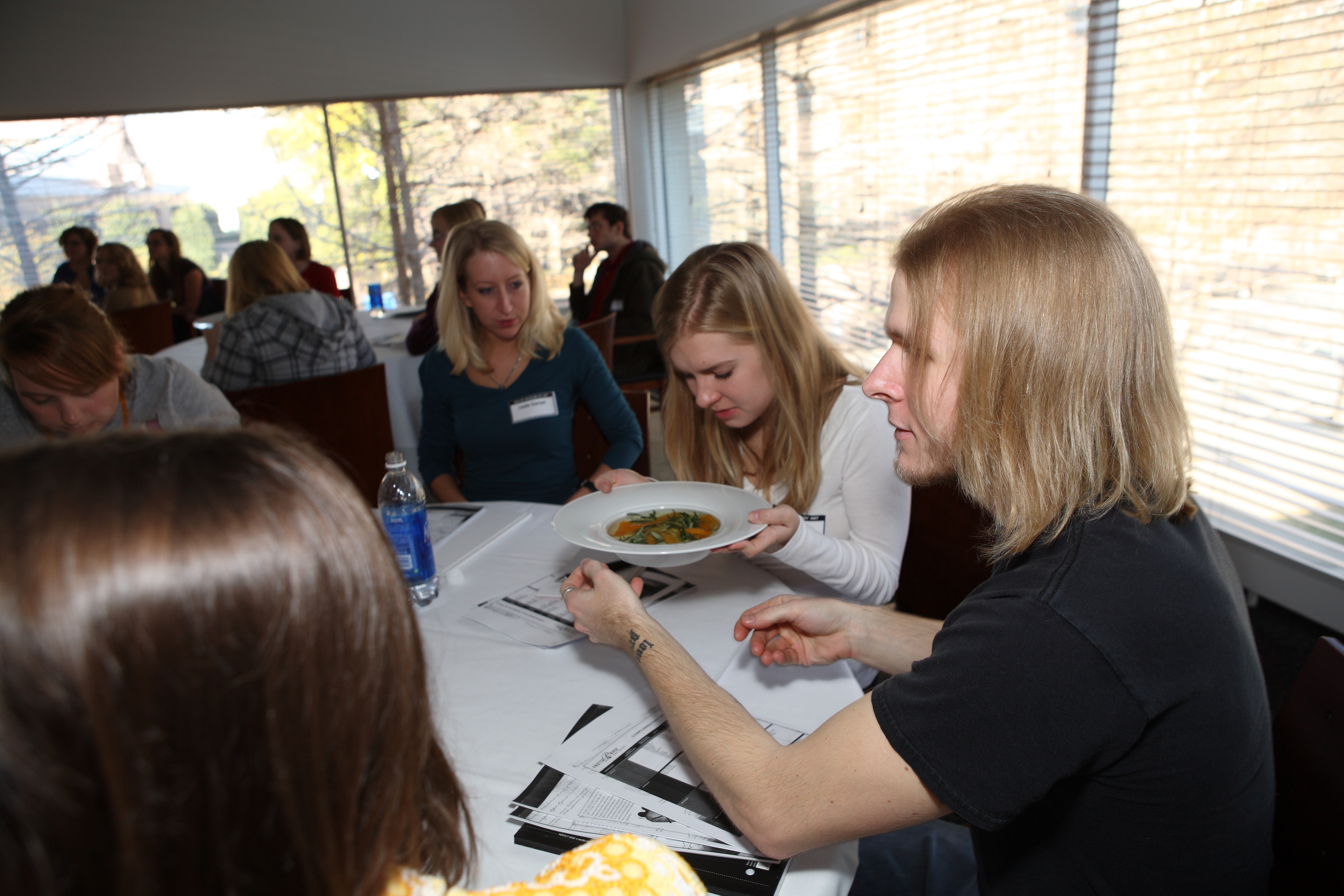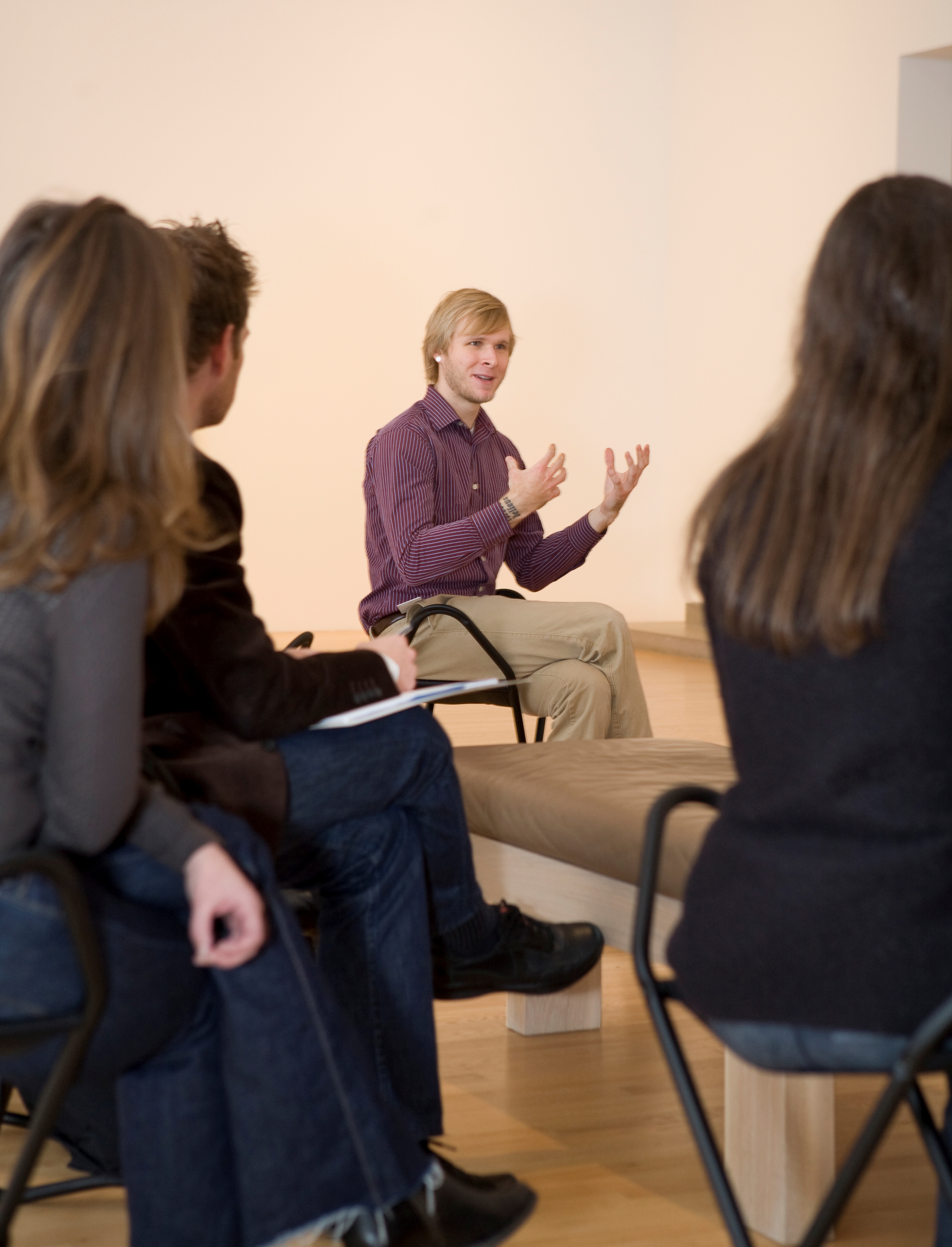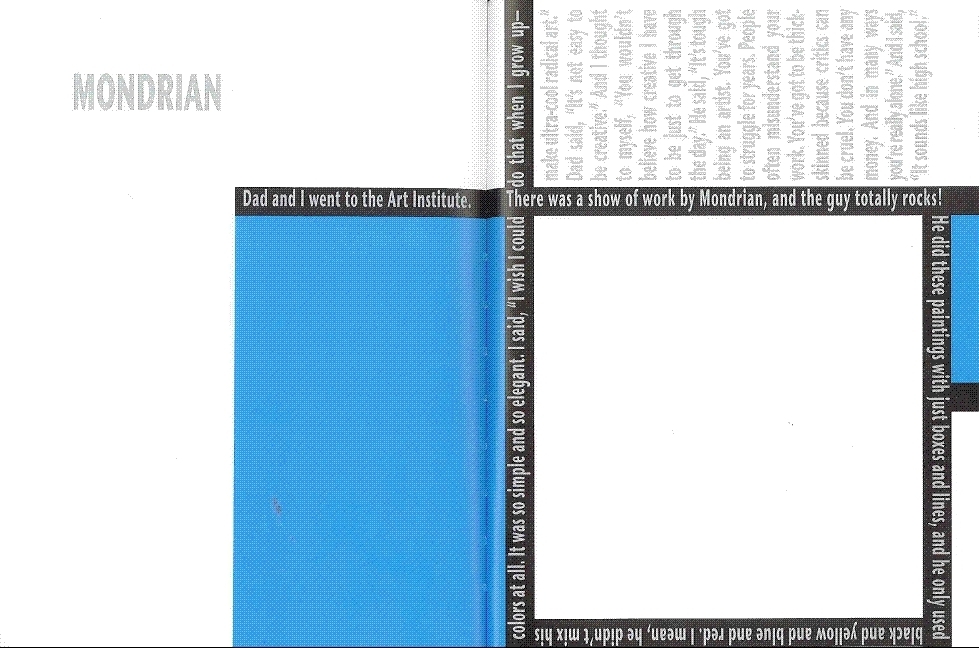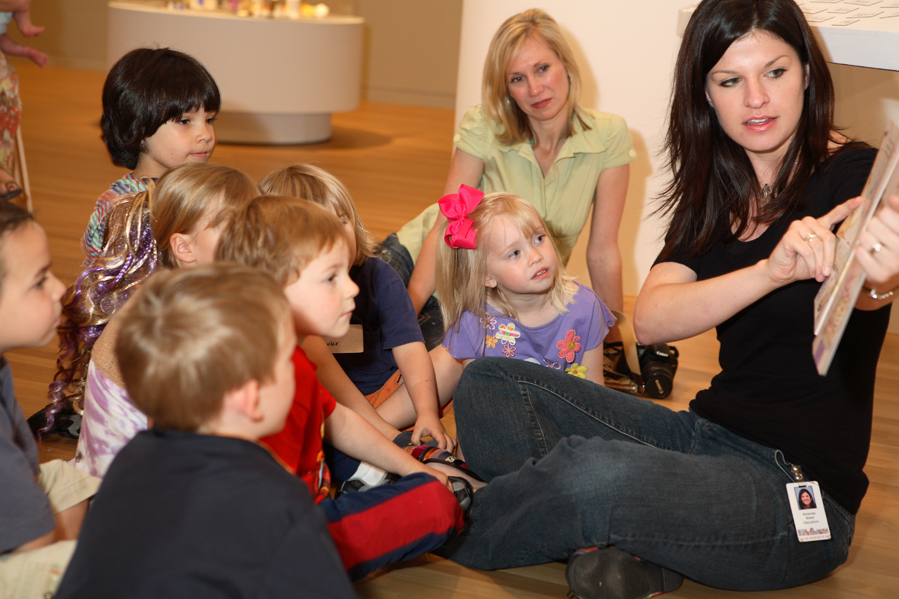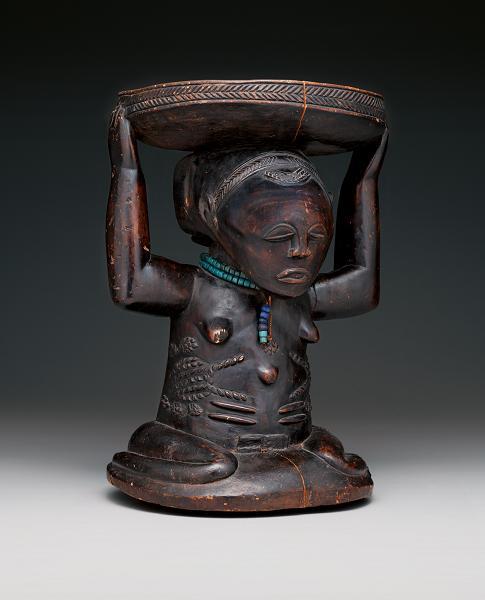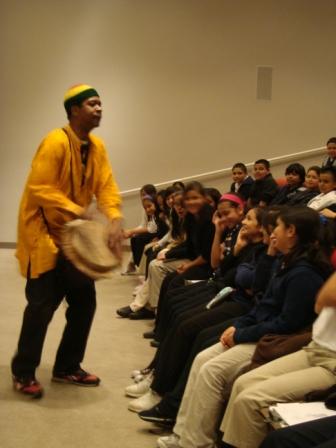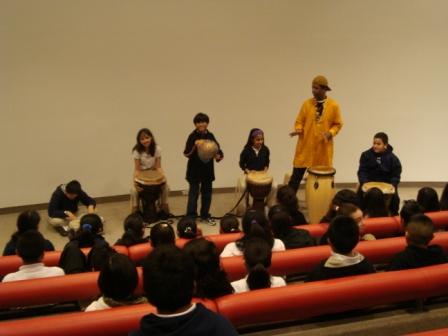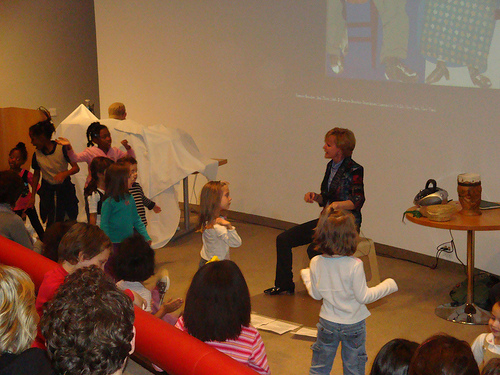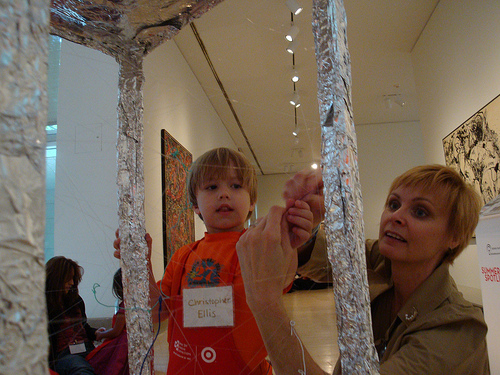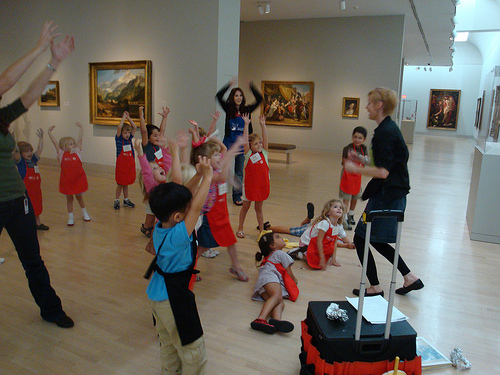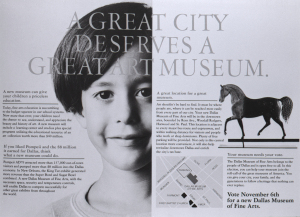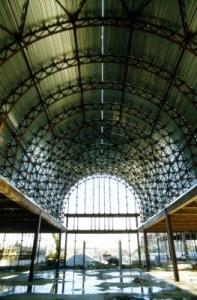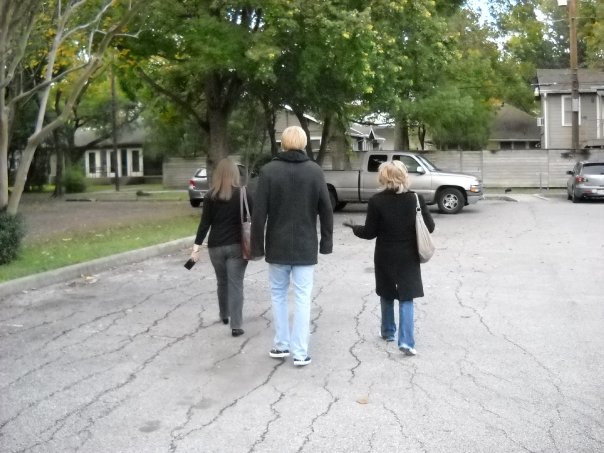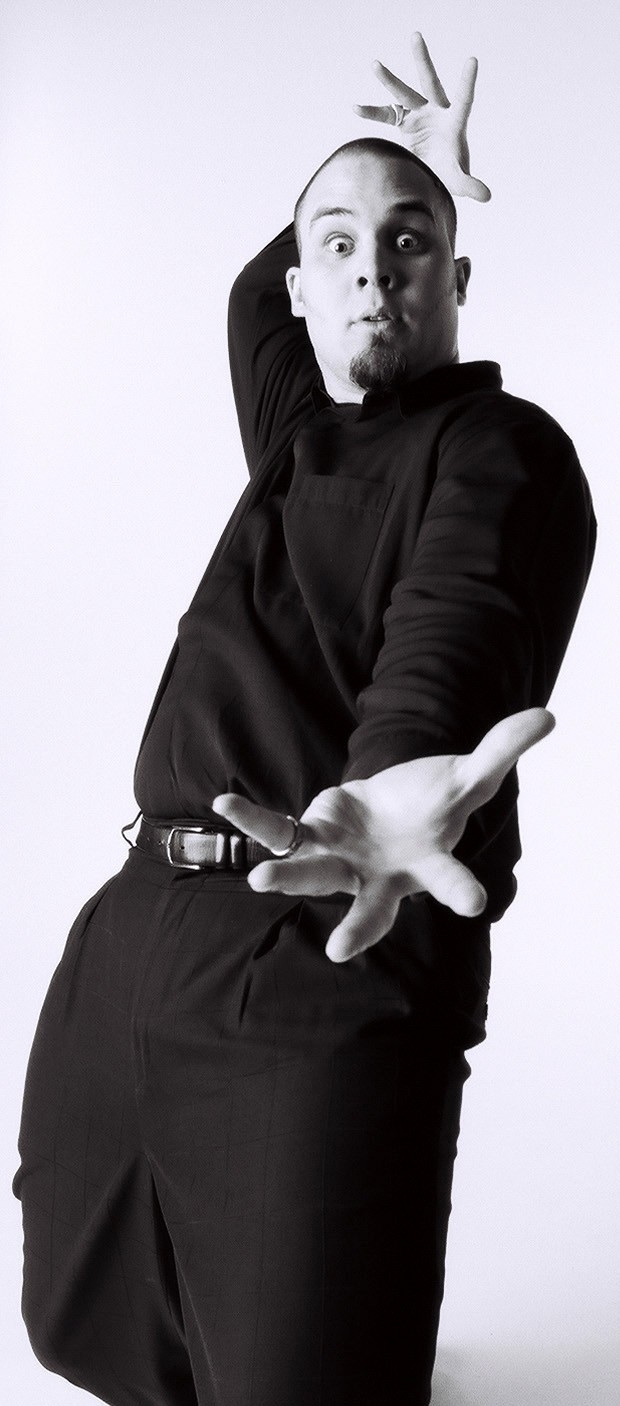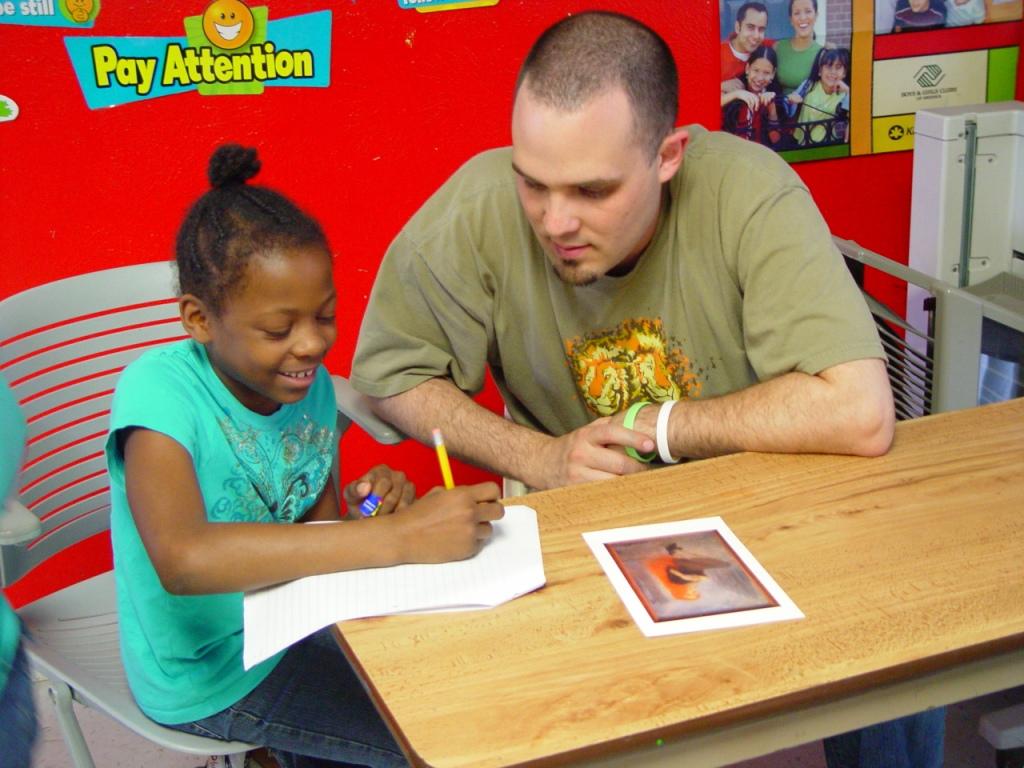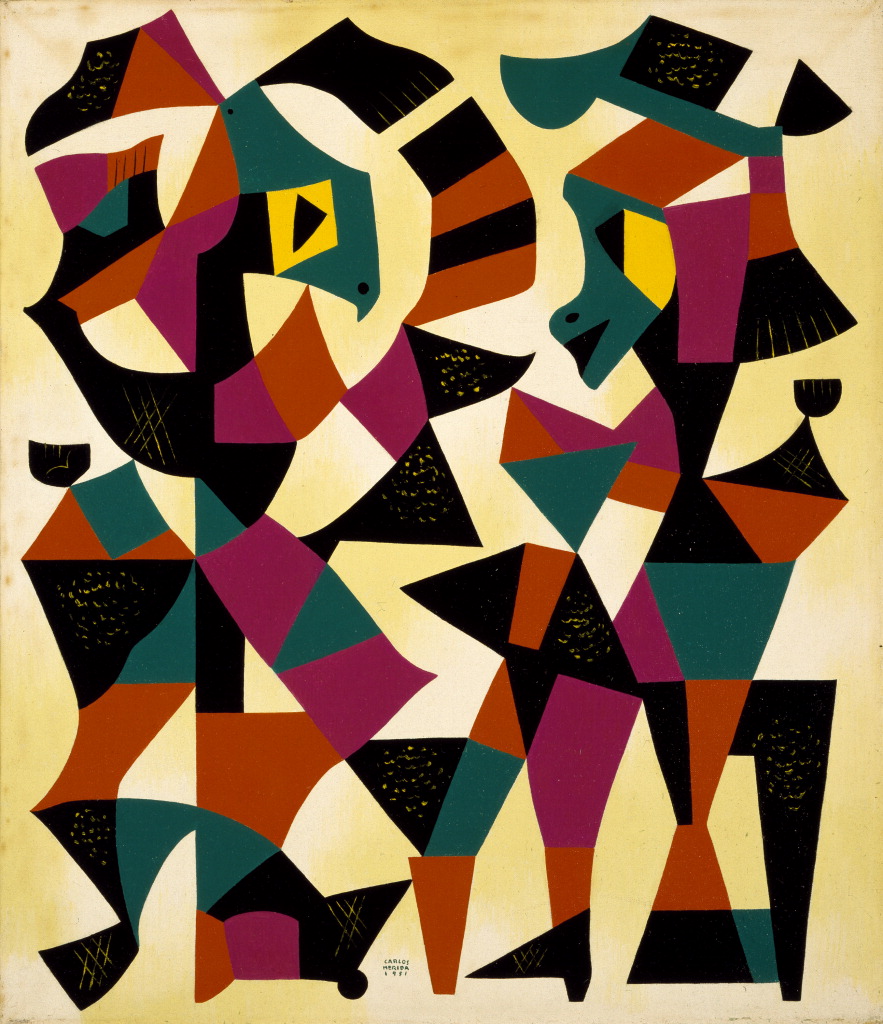I began my relationship with the Dallas Museum of Art when I was an AP art student at Frisco High School and visited the Museum with my class. Although I spent at least three hours a day in art classes during my senior year, the Museum felt like it was a world apart from my own, much further than the half hour drive from my school. After graduating from Frisco High, I earned a scholarship to the University of Texas at Dallas where I was accepted into Collegium V, the honors program there. In addition to the courses available on campus, each spring UT Dallas and the Dallas Museum of Art collaborate to offer an innovative honors seminar that takes place at the Museum.
I signed up for the partnership class in the spring of my freshman year, a course devoted to the Maya, and I fell in love with the Museum. I took the class again the following year, studying modernism, then once more the next spring, studying the process of creativity. Although I had graduated with my Bachelor´s degree in Art & Performance by the time my fourth year arrived, I was able to participate as a graduate student auditing the course, this time about the senses in art and literature. As my scholarship program drew to a close, I learned that the Museum offers eight McDermott internships: four in the Curatorial Department and four in Education. I knew I loved art, I knew I loved sharing the things I was passionate about with others, so I applied to work at the Museum doing just that. Not long after, I found myself walking through the Museum’s doors as the McDermott Teaching Programs Intern.
Not only have I been afforded the great opportunity to participate in teacher workshops and docent training as well as leading tour groups of all ages, but I have found myself on the other side of the table in the spring honors seminar. My experiences as a high school, undergraduate, and graduate student have shaped the way I see the Museum and the educational opportunities it provides, especially the way we interact with visitors. As someone who has witnessed it firsthand, I know that transformative experiences with art in the Museum are possible. My goal as a museum educator is not to impart a specific set of facts to a group of students, but rather to spark each student’s sense of wonder and provide them a starting point for whatever journey their imagination takes.
